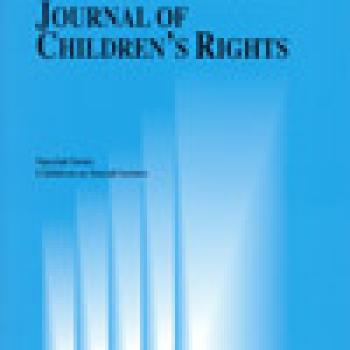
Understanding how poverty and inequalities impact on children is the major goal of Young Lives, a unique longitudinal, mixed-methods study. Two cohorts totaling 12,000 children are being tracked since 2001, growing-up in Ethiopia, the state of Andhra Pradesh (AP) India, Peru and Vietnam. Earlier versions of this paper were prepared as Young Lives contribution to a UNICEF/UN Women consultation on the post-2015 Development agenda, (www.worldwewant2015.org/inequalities) and published as Woodhead, Dornan and Murray (2013).
We summarise Young Lives evidence to date on eight research issues that are central to any child rights agenda:
How inequalities interact in their impact on children’s development, and the vulnerability of the most disadvantaged households. The ways inequalities rapidly undermine the development of human potential. How gender differences interconnect with other inequalities, but do not always advantage boys in Young Lives countries. The links between poverty, early ‘stunting’, and later outcomes, including psycho-social functioning, as well as emerging evidence that some children recover. Inequalities that open up during the later years of childhood, linked to transitions around leaving school, working, and anticipating marriage etc. Children’s own perceptions of poverty and inequality, as these shape their well-being and long-term prospects. Evidence of the growing significance of education, including the ways school systems can increase as well as reduce inequalities. The potential of social protection programmes in poverty alleviation.We conclude that since inequalities are multidimensional, so too must be the response. Equitable growth policies, education and health services, underpinned by effective social protection, all have a role to play.
The article is reproduced in accordance with Brill Academic Publishers.
The final published version of the article is available on the journal website.
Reference:
Martin Woodhead, P. Dornan, and H. Murray (2014) ‘What inequality means for children: evidence from Young Lives’, International Journal of Children’s Rights 22 (3): 467-501. DOI 10.1163/15718182-02203006.

Understanding how poverty and inequalities impact on children is the major goal of Young Lives, a unique longitudinal, mixed-methods study. Two cohorts totaling 12,000 children are being tracked since 2001, growing-up in Ethiopia, the state of Andhra Pradesh (AP) India, Peru and Vietnam. Earlier versions of this paper were prepared as Young Lives contribution to a UNICEF/UN Women consultation on the post-2015 Development agenda, (www.worldwewant2015.org/inequalities) and published as Woodhead, Dornan and Murray (2013).
We summarise Young Lives evidence to date on eight research issues that are central to any child rights agenda:
How inequalities interact in their impact on children’s development, and the vulnerability of the most disadvantaged households. The ways inequalities rapidly undermine the development of human potential. How gender differences interconnect with other inequalities, but do not always advantage boys in Young Lives countries. The links between poverty, early ‘stunting’, and later outcomes, including psycho-social functioning, as well as emerging evidence that some children recover. Inequalities that open up during the later years of childhood, linked to transitions around leaving school, working, and anticipating marriage etc. Children’s own perceptions of poverty and inequality, as these shape their well-being and long-term prospects. Evidence of the growing significance of education, including the ways school systems can increase as well as reduce inequalities. The potential of social protection programmes in poverty alleviation.We conclude that since inequalities are multidimensional, so too must be the response. Equitable growth policies, education and health services, underpinned by effective social protection, all have a role to play.
The article is reproduced in accordance with Brill Academic Publishers.
The final published version of the article is available on the journal website.
Reference:
Martin Woodhead, P. Dornan, and H. Murray (2014) ‘What inequality means for children: evidence from Young Lives’, International Journal of Children’s Rights 22 (3): 467-501. DOI 10.1163/15718182-02203006.

